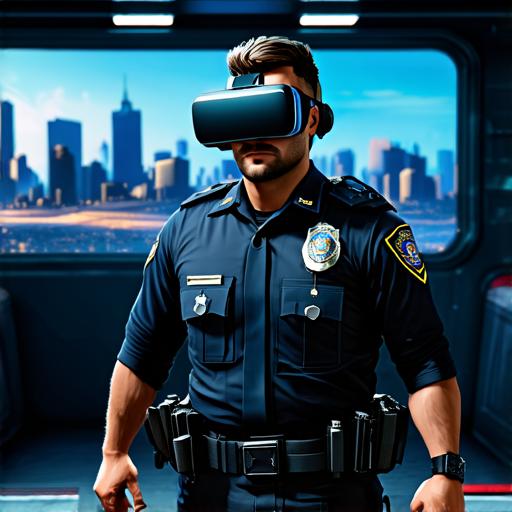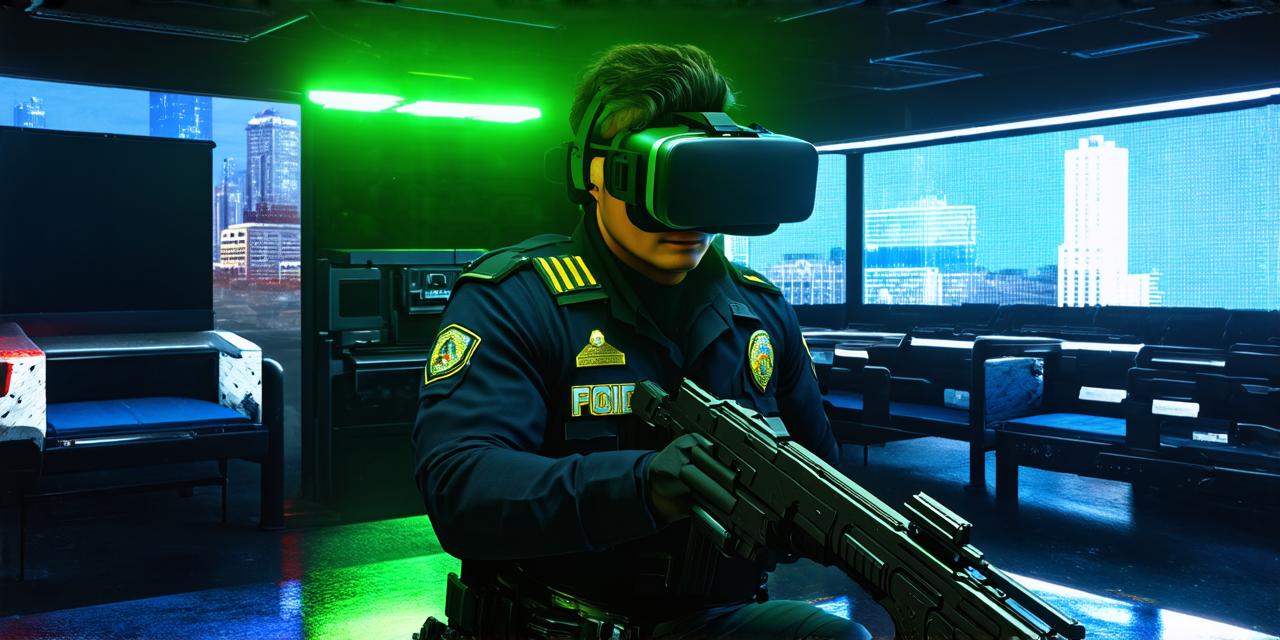Immersive Simulations
One example of how VR is being used in law enforcement training is through the use of immersive simulations. These simulations allow officers to experience what it’s like to be in a particular situation, such as responding to a high-speed chase or a hostage situation.
By experiencing these scenarios in a virtual environment, officers can gain valuable knowledge and skills that they can apply in real-life situations. Immersive simulations provide a realistic experience that allows officers to react quickly and make split-second decisions, which are critical in high-pressure situations.
360-Degree Videos
Another way VR is being used in law enforcement training is through the use of 360-degree videos. These videos allow officers to view a scene from every angle, giving them a better understanding of what’s happening and allowing them to make more informed decisions.
For example, a 360-degree video of a crime scene can be used to train officers on how to navigate the scene and identify potential clues. This technology provides a comprehensive view of a situation that allows officers to identify all the details and potential risks, which is critical in making informed decisions.

The Benefits of Virtual Reality in Law Enforcement Training
Virtual reality technology has several benefits when it comes to law enforcement training. One of the main benefits is that it allows officers to practice their skills in a safe environment, without putting themselves or others at risk.
This is particularly important for high-risk scenarios such as hostage situations or tactical operations. Officers can gain experience and confidence in a controlled environment, which helps them to perform better in real-life situations.
Another benefit of VR technology in law enforcement training is that it allows officers to gain a better understanding of the situations they may encounter on the job. By experiencing these scenarios in a virtual environment, officers can identify potential risks and develop strategies for dealing with them. This can help to reduce the number of incidents and improve the overall safety of the community.
Virtual reality technology also allows for more efficient and cost-effective training. Traditional training methods such as live exercises and drills can be expensive and time-consuming, but VR simulations can be conducted in a controlled environment and at any time.
This means that officers can receive the training they need without having to take time off work or spend additional resources on equipment and facilities. VR technology is cost-effective and provides more opportunities for training, which leads to better-prepared officers.
The Future of Virtual Reality in Law Enforcement Training
Virtual reality technology is constantly evolving, and its use in law enforcement training is likely to continue growing in the coming years. One area where VR is likely to have a significant impact is in the area of artificial intelligence (AI). AI can be used to create more realistic simulations, allowing officers to experience situations that may not be possible to simulate in real life.
AI can also provide personalized training experiences based on an officer’s performance and skill level, which allows for more efficient and effective training. Another area where VR technology is likely to make a significant impact is in the area of training for specialized units such as SWAT teams and bomb squads.
These units often deal with high-risk scenarios, and VR technology can provide them with the opportunity to practice their skills in a safe environment. This can help to reduce the number of incidents and improve the overall safety of the community. Virtual reality technology provides a realistic experience that allows officers to practice their skills and make informed decisions, which leads to better outcomes in real-life situations.
Conclusion
Virtual reality technology has the potential to revolutionize law enforcement training by enhancing officer’s knowledge and skills, improving safety, reducing incidents, and providing more efficient and cost-effective training. VR technology provides a safe environment for officers to practice their skills and make informed decisions, which leads to better outcomes in real-life situations. The use of immersive simulations and 360-degree videos provides a comprehensive view of a situation that allows officers to identify all the details and potential risks, which is critical in making informed decisions.
